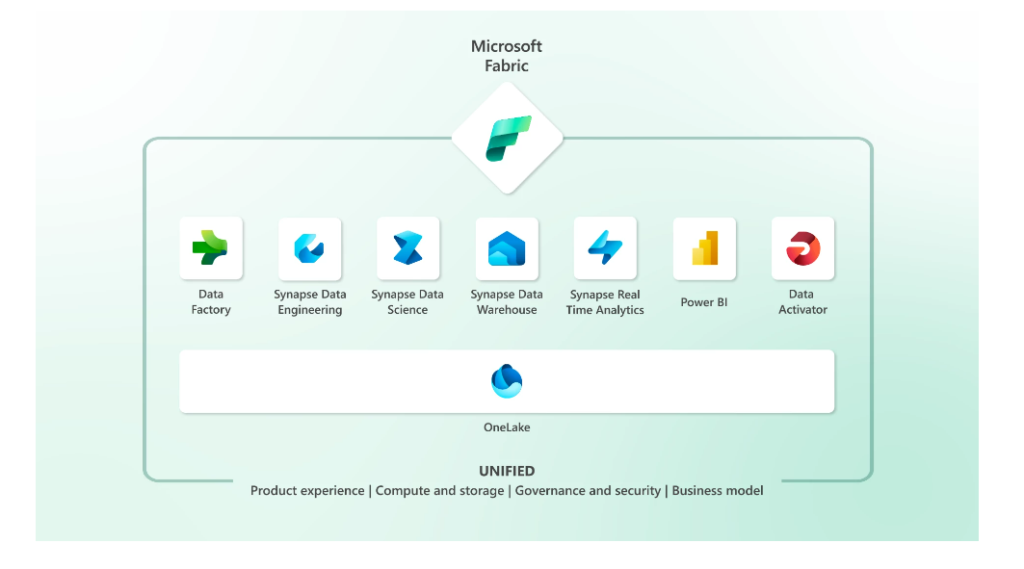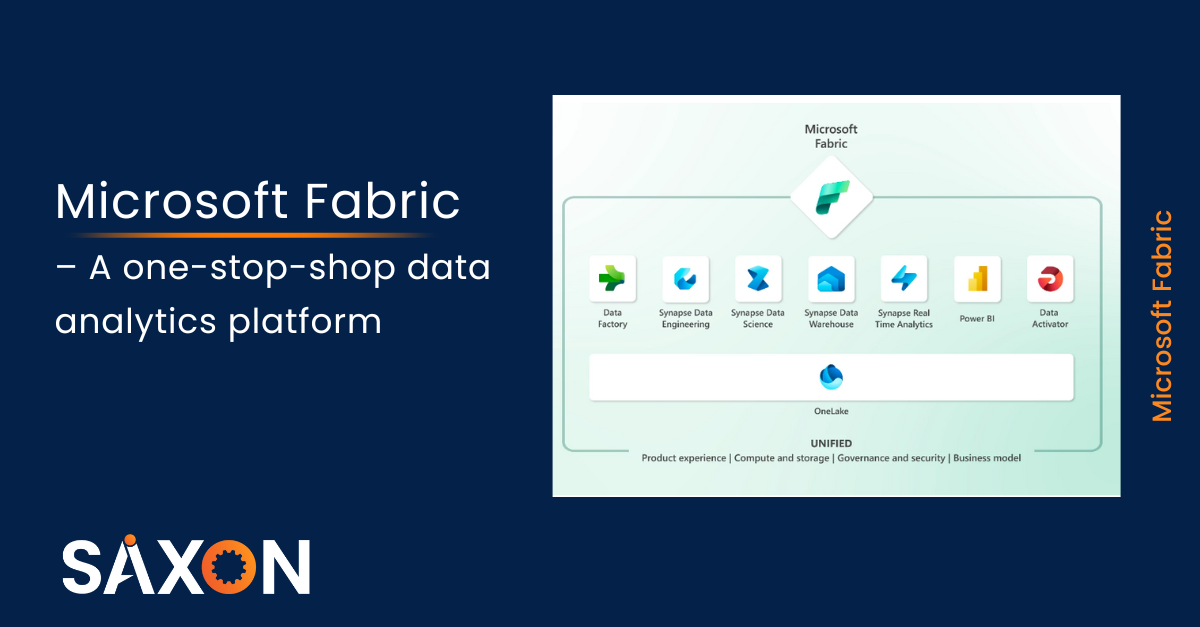Microsoft unveiled a unified analytics platform called Microsoft Fabric at the Build 2023 event. However, Fabric is not a brand-new product but a repackaging of Microsoft’s best-of-breed data and analytics tools. Why would Microsoft do that? How will Fabric make a difference for businesses?

Solving the overlooked problem – Complexity
A successful data project requires seamless collaboration among data integration, data engineering, data warehousing, data visualization, and data governance platforms. These come from different vendors with their own licensing plans. For example, Microsoft alone offers over 30 products. Including other major vendors like Amazon and SAP will take the number up to 100.
“Numerous data and analytics products are available now. Weighing these products, learning about them, and integrating them together is a challenging job. Also, the integration costs are high, taking up budget estimations and project execution to a different complexity,” says Radhika, Solution architect at Saxon.
The data and analytics market is more mature than it was a decade ago. Businesses have been harnessing data in decision-making by extracting actionable insights. C-suites are happy with the value added by their data teams. However, data teams are spending sleepless nights integrating data sources and platforms without compromising on security to get things done.
Vendors of data and analytics products have been heads down, shaping up their offerings. Individually, each product comes with its own USPs, adding value to users. But simplicity is missing in the whole process.
How Microsoft Fabric makes a difference
Microsoft has been envisioning its offerings with a lens of unified access and superior data discoverability across different portfolios. In its latest build conference, Microsoft addressed the big elephant in the room – IT complexities in data analytics. So, it has taken the tried-and-tested umbrella approach.
For the uninitiated, back in 2015, Microsoft stitched together Power Query, Power View, and Power Pivot to create Power BI. For the simplicity it offers, Power BI is widely adopted and went on to be a leader in Gartner’s Magic Quadrant. Microsoft wants to take the game one step further by creating an umbrella over Power BI and other best-of-breed data and analytics products. The result is Microsoft Fabric – a unified lake-centric SaaS platform for end-to-end data analytics needs.
Microsoft Fabric comes with seven core workloads, including Azure Data Factory, Synapse Data Engineering, Synapse Data Warehousing, Synapse Real-time Analytics, Power BI, Data Activator, and Purview for data governance. All these services are connected to one single data lake called OneLake. So, your data team doesn’t have to maintain different copies of data for each service. OneLake in Fabric is akin to what OneDrive for Microsoft 365 applications. With OneLake being the single source of truth, Microsoft Fabric will give more accurate analytics for businesses.
In a statement, Microsoft said, “With this all-inclusive approach, customers can create solutions that leverage all workloads freely without any friction in their experience.”
“Fabric eliminates the hurdles of integrating different tools for different workloads. Without worrying about licensing and integration costs, we can focus on what really matters to us – results,” says Radhika.
While offering unified data, experience, and governance, Microsoft Fabric will also offer the following benefits for enterprises:
AI-powered analytics platform
We are living in the AI era. Microsoft is leading the game with ChatGPT. We have already discussed how Copilot helps small and medium scale enterprises drive digital transformation through the Microsoft Power Platform. Microsoft enables businesses to unlock the full potential of data by integrating Copilot with Fabric.
Driving data culture
Companies are doubling down on creating data culture more than ever. To help companies foster their data culture, Microsoft deeply integrates Fabric with Microsoft 365 applications. So, businesses can access and analyze data in OneLake from any Microsoft 365 application with a few clicks and unlock insights. Unified data in OneLake also eliminates data duplications and data sprawl, enhancing data quality and enabling businesses to be agile and adaptive to market changes.
Reduced costs
Microsoft Fabric simplifies purchasing and managing data analytics products by unifying all the data and analytics products on a single platform. You don’t have to buy different licenses for different products. You can access all the services with one Fabric license.
Faster time to analytics
Fabric eliminates the need for disparate services by unifying its existing offerings. By cutting down the time spent on setting up the tech stack, Fabric enables businesses to start quickly on their data initiatives. Also, the unified UI of Fabric eliminates the need for switching between applications, enabling businesses to gain faster insights in real-time.
“There are so many different PaaS services across the board that when it comes to modernization efforts for many developers, Fabric helps simplify that. We can now spend less time building infrastructure and more time adding value to our business,” says Aon’s data services lead, Boby Azarbod. Aon is one of the early users of Fabric.
Looking forward
Microsoft is addressing the tech stack complexity challenge, which other vendors failed to see (or at least failed to address first). Given the growing importance of business intelligence and the competition in this space, we are eager to see how other vendors like Amazon will try to catch up. You can try our Microsoft Facbric, 1 Hour Free Consultation.


